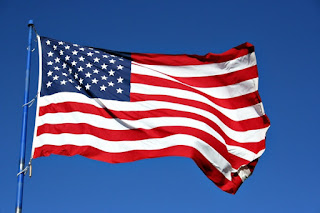In the late 1970s, there was a cemetery my school bus passed
every day. One of the headstones that
faced the street displayed a photograph of the child buried there. At the time, I found the image unsettling and
would avoid looking at the grave when we passed by. I’m not sure why it bothered me. I had spent many hours in cemeteries doing
research with my genealogist parents, but as a 12 year old, it was beyond my
understanding of why a picture would be put on a headstone.
Today, I am a volunteer with an online records preservation site
called BillionGraves. As a volunteer, I
visit cemeteries throughout the world and photograph headstones which later are
transcribed and made available with GPS coordinates for individuals searching
for their ancestors. Every once in a
while I come across a headstone that displays a picture of the deceased. It no longer unsettles me as it did when I
was a youth. It is a wonderful reminder that
the individual buried there is more than a name and two dates etched in stone. But, just as I have adjusted to seeing the
faces of the deceased on headstones, a new technology has emerged providing
information beyond the imagery and inscription. And while we live in the age of
ever advancing technology, not everyone is comfortable with this new addition
to the headstones -- the QR code.
If you are not familiar with the term QR code, it is a
digital square box that can be scanned to obtain information regarding the item
it is attached to. So why place a QR code on a headstone? Who is doing the
scanning and how?
QR Codes on
Headstones
QR codes on headstones began to make their appearance within
the last decade. Who started the process
is debatable. There are a variety companies
in the United States that claim they were the first, however, the earliest reference
I was able to come across is Quiring Monuments, a Seattle based company who placed
their codes on headstones in 2011. The idea was to provide additional information regarding the
deceased, such as an obituary, family stories, and any other documentation of
historical importance. A virtual records
repository, if you will. Anyone
researching the individual would simply scan the QR code with a smart phone,
and the photographs and documents pertaining to that person would be made
available through a site the family or cemetery administration managed.
Anyone who has researched family history will tell you that
courthouses burn, documents fade with time, and often information is misplaced,
mislabeled or lost. A stone with an
etched QR code would provide an opportunity to have access to those documents even
after the original records can no longer be found. For genealogical purposes this seems like a
wonderful idea if you know who the individual is, where they are buried, and
know the QR code is there.
Breaking Away From Tradition
There was a time when placing an image on a gravestone was considered controversial. Jewish
law and Christianity prohibit idol worship, and so many people rejected the idea of
adding a photograph to their loved one’s grave fearing that the prayers said at the grave site might be misconstrued and seen as praying to the deceased.
“Thou shalt have no
other gods before me.
Thou shalt not make unto
thee any graven image, or any likeness
of anything that is in heaven
above, or that is in the earth beneath, or that
is in the water under
the earth.”
Exodus 20:3-4
But while some people rejected the idea of adding images citing religious beliefs,
others begged the question, “Are we visiting the cemetery to visit our dead
or to pray to God?” If the intent is to visit and keep
the memory of the loved one alive, then why not a photograph? And if not a photograph, why not a QR code?
I recently asked a group of friends what they thought of QR
codes on cemetery headstones. While some
people felt it would be a wonderful way to learn about people buried in a
cemetery, others felt that bringing technology into the cemetery would be "tacky." Most agreed that tying information regarding
the individual and the headstone to some sort of database would be sufficient. But we have that already, don’t we? Sites such as BillionGraves and FindAGrave do
just that. They have taken the image of
the headstone and attached with it further documentation regarding the
deceased.
So what to do with the QR codes? One individual suggested that QR codes be
allowed if the family members request one.
When sites such as BillionGraves or FindAGrave digitize the headstone,
the QR code could be attached, providing the viewer with additional information
on their ancestor.
And what about photographs displayed on headstones? While some people felt it was a nice idea,
many others did not, pointing out that too often the images etched into the
stone do not turn out well, and that the digital photographs inserted in the
stones fade and are destroyed by the elements of nature.
Let me hear from you!
What are your thoughts regarding cemetery headstones? Should headstones only display names and dates,
or should we allow technology to take a place within the graveyard?


